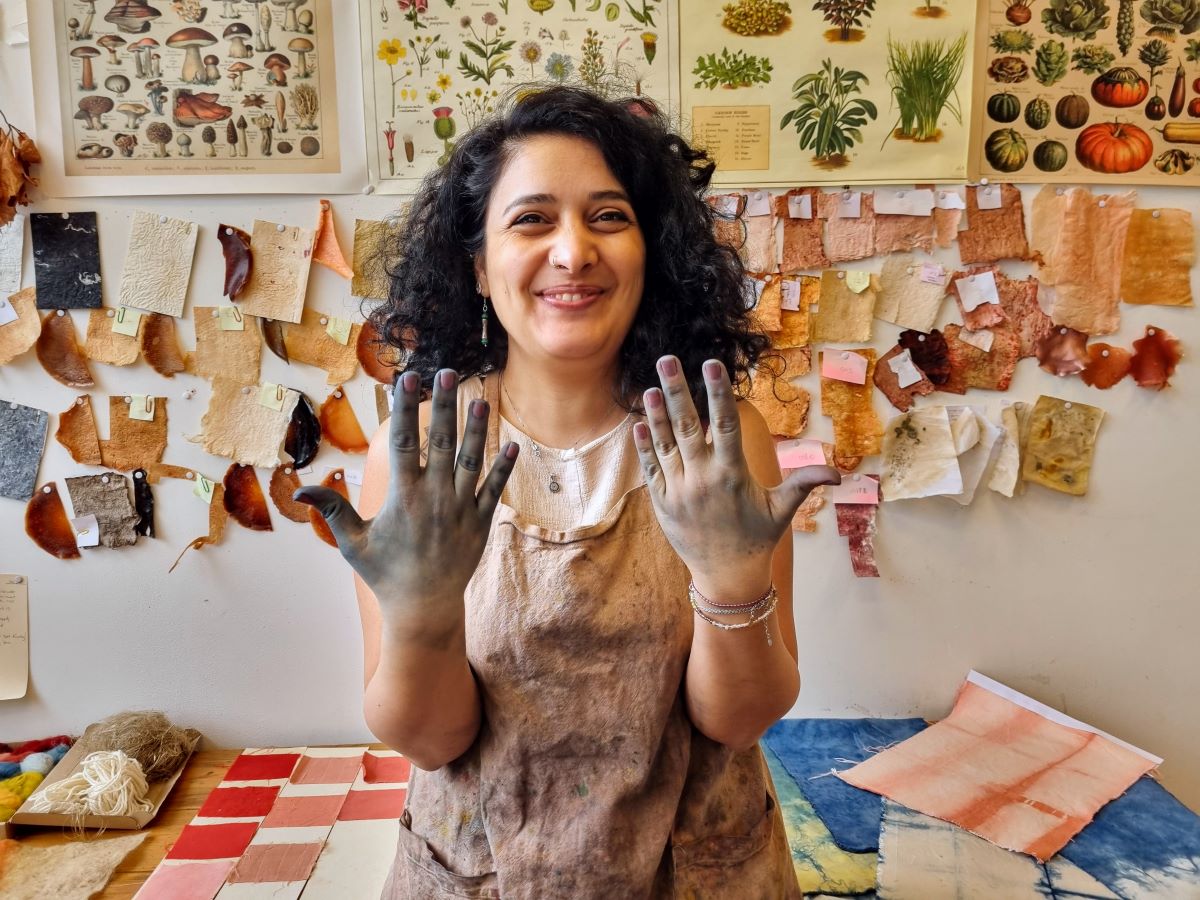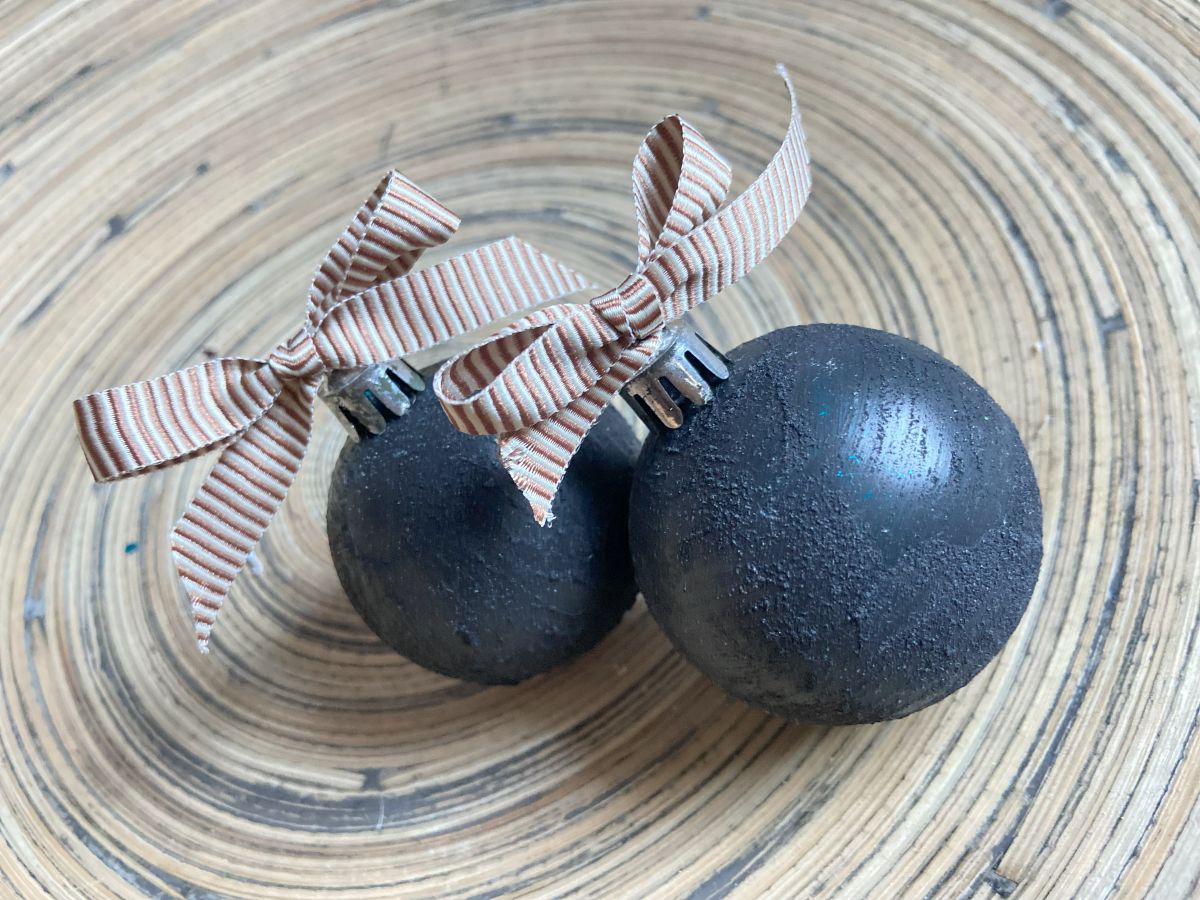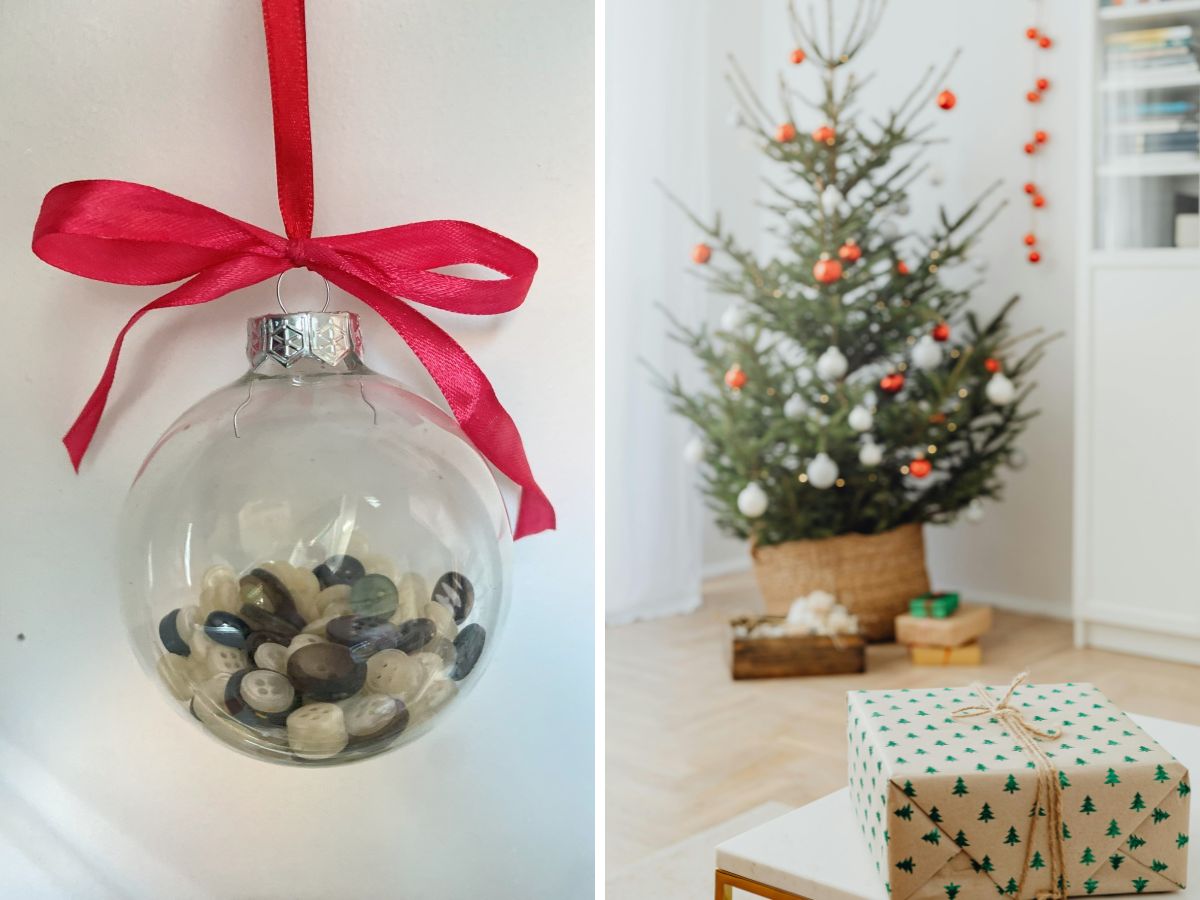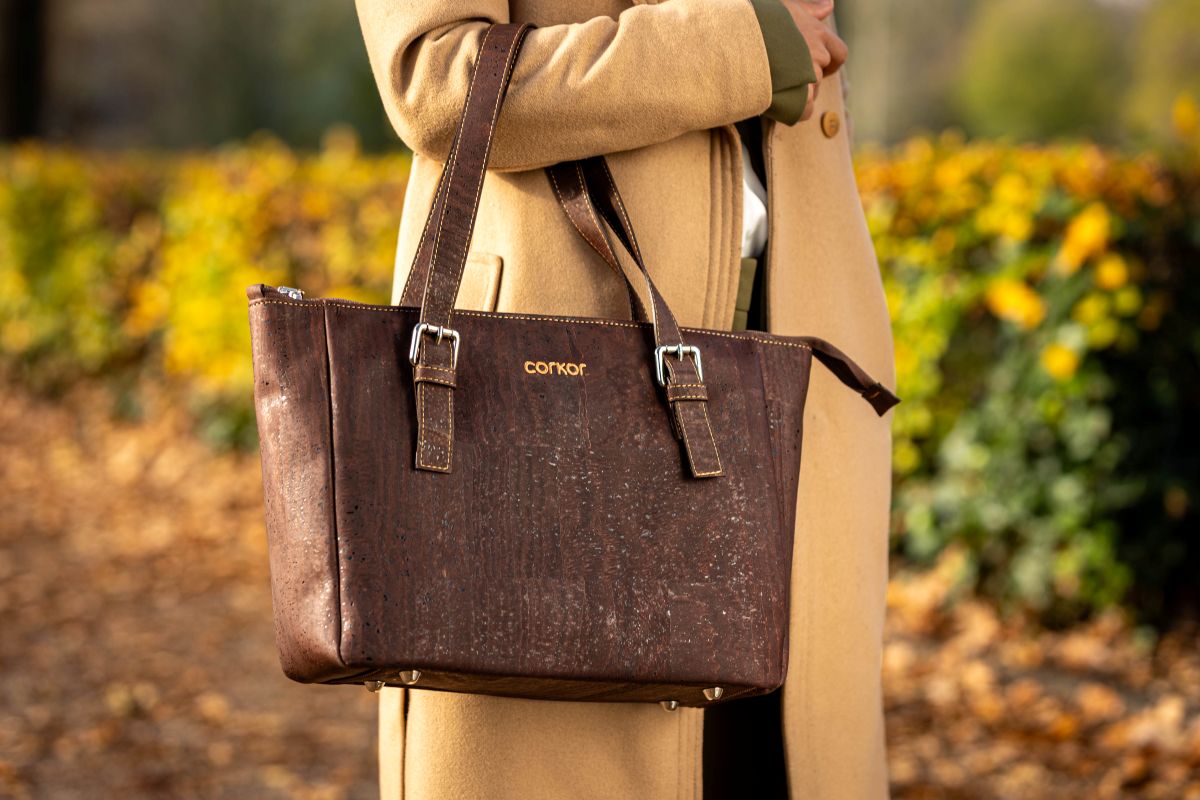Say you have a piece of clothing that is not quite your cup of tea. Maybe the colour is not ‘your colour’ or it has a stain on it. It's time to give this one item a new twist, so you fall in love with it again and start wearing it more often. We apprenticed with Roua Alhalabi. She is an expert on natural dyeing, dyeing clothes with natural textile paint made from plants, food, seeds, nuts, food scraps, but waste is also a material for her to make beautiful natural paint from. We went there with an old shirt and boring shorts!
Natural textile paint?
Did you know that lots of everyday products can serve as textile dyes? How about the seed of an avocado for a cool pink colour, onion peelings make a garment yellow or red, rust on a nail creates a grey or purple colour, and there are many more (natural) products that can serve as the basis for textile dyes - we will come to that in a moment! And the fact that this is possible is great news, because there is a lot going on around textile dyeing.
Many textile dyes are harmful
Unsurprisingly, many textile dyes are not very tasty stuff. It is often made from toxic chemical ingredients that you have to be careful with. It shouldn't end up in nature and caution is also needed when coming into contact with people. And unfortunately, this sometimes goes wrong at textile factories in faraway places - where they don't take rules and people very seriously. There are stories of textile dyes ending up in nature around the factories and flowing into villages via water. Water used by locals for personal hygiene, cooking, washing and so on. In addition, textile dyes can be used for irritations and allergic reactions concerns among the people wearing the garments. Not for nothing do new clothes for newborns and small children have to be washed before they can be worn. Immediately have another reason to buy second-hand more often. Or to start dyeing your own clothes naturally....
Natural dyeing: a sustainable alternative to textile dyeing
Dyeing with natural materials is an age-old technique that is better for the planet and also creates beautiful colours. Roua was born and raised in Syria where her grandmother passed on her love for natural dyeing techniques. ‘My grandmother knew all about natural pigments and carpet weaving,’ she says. ‘Unfortunately, she was not able to teach me her weaving, but we did a lot of dyeing together. Later, I went to art school where - not entirely coincidentally - I also chose the textile direction. And there, during my studies, I became acquainted with natural dyeing techniques from other countries, such as India and Japan, eventually developing my own technique and sharing it in the Netherlands and Europe with fashion designers, (sustainable) companies, at schools and during workshops with enthusiastic DIYers.’


Getting started with natural textile paint using an old T-shirt from the thrift store and an old light pink sports shorts, we make indigo (blue).
Dyeing your own clothes with natural ingredients such as onion skins and avocado seeds
OK, so Roua knows lol about natural dyeing techniques. And in her studio, she shows how many possibilities there are. Not only with lots of natural materials that give beautiful colours, but also how you can play with the length of time you let the natural dyes soak in, making fabrics darker or lighter in colour. She shows you how to stack colours and use them to create new colours. You can even dye with water, but also without. How about creating patterns by using flowers as stamps or wrapping the garment with rubber bands and marbles. In short, the possibilities are endless with natural dyeing And that shows Roua enthusiastically.
Awesome! This is all natural textile paint
So in Roua's workshop, you will discover how to dye garments with all kinds of everyday products, not only plants, food scraps and waste, but also seeds and herbs. If you want to do the same, below you will find a list of all the natural ingredients she uses to make her textile dyes. You can start experimenting like a pro right away - colouring one T-shirt with twenty grams of onion skin, for example -, but Roua advises beginners to always start with powdered pigments. She makes them herself and they are in its webshop for sale. If a colour is not available, she probably hasn't been able to harvest it that year. Because she really works with the seasons, how cool! A beginner's recipe for dyeing textiles with powdered pigments can be found here!
- Avocado seed and skin: pink
- Onion skin: yellow, golden or red
- Rust (from a nail): grey or purple
- Walnuts, chestnuts and acorns: brown
- Stinging nettle: green or beige
- Maggot root: (deep) red
- Beets: pink or purple
- Turmeric: yellow
- Indigo: blue
- Pine cone: pink
If you have never dyed clothes yourself before, it is also hearty fun - and perhaps wiser - to first a workshop at Roua to follow.



Roua makes the pigments herself, such as nuts and acorns for shades of brown and red onion skins for a splash of pink. Got curious? We attended three short workshops with her and we made videos of them. video 1: dyeing trainers yellow with onion peelings: video 2: trousers dyed blue with indigo, video 3: dyeing a recycled shirt.
Get started with a no buy clothing style
Besides dyeing clothes, we have many more ideas to breathe new life into clothes hanging unworn in the closet. We'll get you started with the No Buy Fashion Guide. Over a hundred pages of cool ideas on how to look nice without even buying anything. Nothing. Nope. Nada. Not even second-hand! For 9.50 euros you will have it delivered straight to your inbox and thus on your tablet or mobile phone!
Will you also join this fun community? Read this guide too and discover lots of original ideas. Because so many cool clothes are already out there! Order the No Buy Fashion Guide from our webshop!
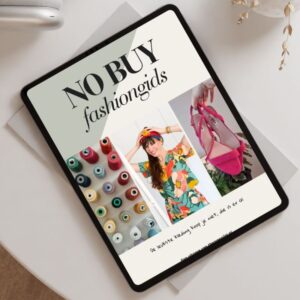
More sustainable tips from thegreenlist.nl
- Also see: Our experience with The Clothing loop!
- Also see: clearing out your wardrobe in four steps!
- Also see: long list of better fashion brands!
Sources: europarl.europa.eu, Stacey Dooley Investigates Fashion's Dirty Secrets. Photo credits: thegreenlist.nl.

